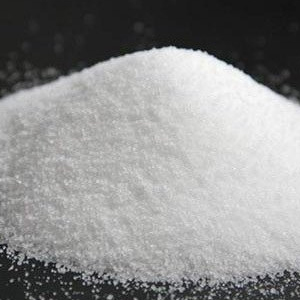
Lactitol is a sugar alcohol used as a replacement bulk sweetener for low calorie foods with approximately 40% of the sweetness of sugar. It is also used medically as a laxative.
Ph. Eur.
C12H24O11-H2O --- 362.3 --- 81025-04-9
Action and use: Osmotic laxative.
DEFINITION
4-O-β-D-Galactopyranosyl-D-glucitol monohydrate.
Content: 96.5 per cent to 102.0 per cent (anhydrous substance).
CHARACTERS
Appearance: White or almost white, crystalline powder.
Solubility: Very soluble in water, slightly soluble in ethanol (96 per cent), practically insoluble in methylene chloride
IDENTIFICATION
First identification: B
Second identification: A, C
A. Specific optical rotation (see Tests).
B. Infrared absorption spectrophotometry.
C. Thin-layer chromatography.
TESTS
Solution S: Dissolve 5.000 g in carbon dioxide-free water and dilute to 50.0 mL with the same solvent.
Appearance of solution: Solution S is clear and not more intensely coloured than reference solution.
Acidity or alkalinity: To 10 mL of solution S add 10 mL of carbon dioxide-free water R. To 10 mL of this solution add 0.05 mL of PhPh solution. Not more than 0.2 mL of 0.01 M sodium hydroxide is required to change the colour of the indicator to pink. To a further 10 mL of the solution add 0.05 mL of methyl red solution. Not more than 0.3 mL of 0.01 M hydrochloric acid is required to change the colour of the indicator to red.
Specific optical rotation: + 13.5 to + 15.5 (anhydrous substance), determined on solution S.
Related substances: To pass the test.
Reducing sugars: Maximum 0.2 per cent.
Lead: Maximum 0.5 ppm.
Nickel: Maximum 1 ppm.
Water: 4.5 per cent to 5.5 per cent, determined on 0.30 g.
Sulfated ash: Maximum 0.1 per cent, determined on 1.0 g.
Microbial contamination:
TAMC: acceptance criterion 103 CFU/g.
TYMC: acceptance criterion 102 CFU/g.
Absence of Escherichia coli.
Absence of Salmonella.
Absence of Pseudomonas aeruginosa.
IMPURITIES
A. 4-O-β-D-galactopyranosyl-D-glucopyranose (lactose),
B. 3-O-β-D-galactopyranosyl-D-glucitol (lactulitol),
C. D-mannitol,
D. galactitol (dulcitol),
E. D-glucitol (D-sorbitol).
C12H24O11 --- 344.31
4-O- -D-Galactopyranosyl-D-glucitol --- [585-86-4].
Monohydrate. 362.34 [81025-04-9].
Dihydrate. 380.35 [81025-03-8].
Lactitol contains not less than 98.0 percent and not more than 101.0 percent of C12H24O11, calculated on the anhydrous basis.
Packaging and storage: Preserve in well-closed containers.
Labeling: Label it to indicate whether it is the monohydrate, the dihydrate, or the anhydrous form.
Identification, Infrared Absorption.
Water: between 4.5% and 5.5% (monohydrate); between 9.5% and 10.5% (dihydrate); and not more than 0.5% for the anhydrous form.
Residue on ignition: not more than 0.5%.
Heavy metals: Dissolve 4 g of it in 25 mL of water: the limit is 5 microgm per gm.
Reducing sugars: To pass the test. (0.2%, as dextrose).
Related compounds: To pass the test. The total of the percentages of all related compounds is not more than 1.5%.